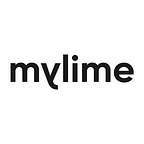Recently, one of the boldest moves in the fashion industry took place. Gucci and Balenciaga’s creative directors, Alessandro Michele and Demna Gvasalia came together with a disruptive concept: The hacker project.
If you haven’t heard about it, check it out as it has the potential to tear the foundations and beliefs of the fashion industry.
So… what is the hacker project?
The project between the two brands debuted during the Spring Summer 2022 fashion show and it launched in pop-ups and pop-in stores. There are 74 locations worldwide that, through unique displays and structures, are displaying the vision of both houses’ codes questioning the concepts of reinterpretation and counterfeiting.
Gucci and Balenciaga’s project was announced back in April and is supposed to be a nod to counterfeit culture, as well as branding and logomania. As both creative directors stated, the hacker project is not meant to be a collaboration but something different and completely new. Collabs have been used and abused in the last years by the fashion industry while this project is supposed to be a “beautiful invasion” as Alessandro Michele stated, and exchange opinions between the directors on the revisited pieces. They both got to choose the iconic looks they loved of the counterpart’s Maison and made it their own, infused with their respective styles. “The hack comes from hacking each other and doing something so creative but almost illegal triggers creativity” they both said. Demna also spoke about counterfeit in the Gucci podcast dedicated to the hacker project: “As long as there is luxury, there is counterfeiting, and counterfeited looks of my t-shirts are interesting as well as they have been modified. My vision was something like this, subtle from a long distance as you think it’s Gucci’s signature monogram, but in reality, they are B of Balenciaga”.
Having heard these words a question arises. What is authenticity if I can just take what someone else did?
What is authenticity?
Alessandro Michele’s creations, as well as Demna Gvasalia’s, are to be considered authentic?
Authenticity is the quality of being real or true. In existentialism, authenticity is the degree to which a person’s actions are congruent with his or her values and desires, despite external pressures to social conformity. To this extent, we have the chance to choose what definition of authenticity we can hold ourselves to. This is exactly what both creative directors did, they experimented and created something new, taking inspiration from each other. Since what they have created has a completely new meaning and resonates with their values, it has to be considered real. There was competition but not against one another (from Latin cum petere, converge to the same point), “creativity is a conversation and nothing is forbidden when you are working with it”.
Surrealism
The turning point beyond authenticity in these collections is the concept of surrealism introduced in particular by Gvasalia. On his bags, he wrote with spray paint the statement “This is not a Gucci bag”, referring to the Treachery of Images by René Magritte.
“Ceci n’est pas une pipe” which translated means this is not a pipe, wants to communicate to us that the representation or the image of any object, in this case, the pipe, must not be confused with the object itself, the real and tangible one. In this case, the artist wanted to underlie the fake power of branding representing an iconic and distinctive pattern that doesn’t match a shape.
The collection’s note states:
“Balenciaga’s Spring 2022 collection presentation considers our changing senses of reality through the lens of technology. We see our world through a filter: perfected, polished, conformed, photoshopped. We no longer decide between unedited and altered, genuine and counterfeit, tangible and conceptual, true and fiction, fake and deepfake. Technology creates alternative realities and identities, a world of digital clones.”
Often, our reason, our vision is wrong and “standardized”. It is very convenient for us to say that that is a Gucci bag, to simplify our life and therefore the reality point-blank. “Fashion is too rigid,” Demna said, “I wanted to create chaos and confusion, and I hope I did it”.
MyLime, the quintessence of the hacker project
When Christie’s auctioned for $69 million a non-fungible token, or NFT, linked to the digital collage Everydays: The First 5000 Days, many people had no idea about what an NFT was. Moreover, they couldn’t even justify who the NFT’s artist was, and how it is now the third-highest selling living artist, for a digital work that the owner can’t have physically.
Here MyLime enters the game. Our vision of NFTs is not speculative, we don’t worship intangibility if a physical counterpart doesn’t exist. MyLime is THE hacker project. As Magritte, we value what is tangible and real instead of fictional representation. Instead of creating the digital representation of a pipe, we create the digital pipe associated with the real one making it fundamentally real. By doing this, we aim to unlock new potentialities and applications for the Metaverse’s future and to solve the ownership, uniqueness, and authenticity problems that come with it.
